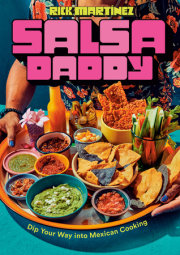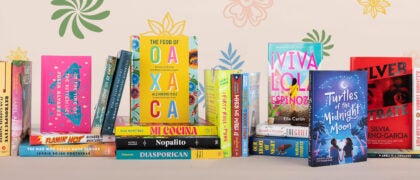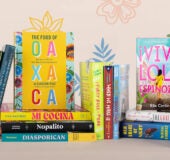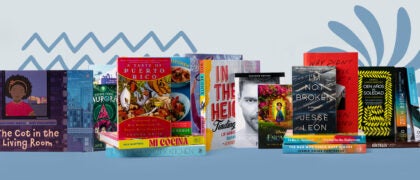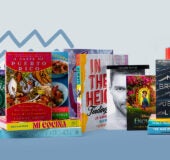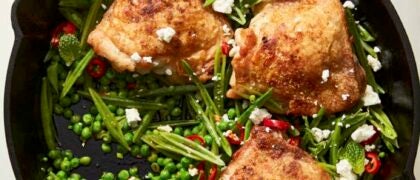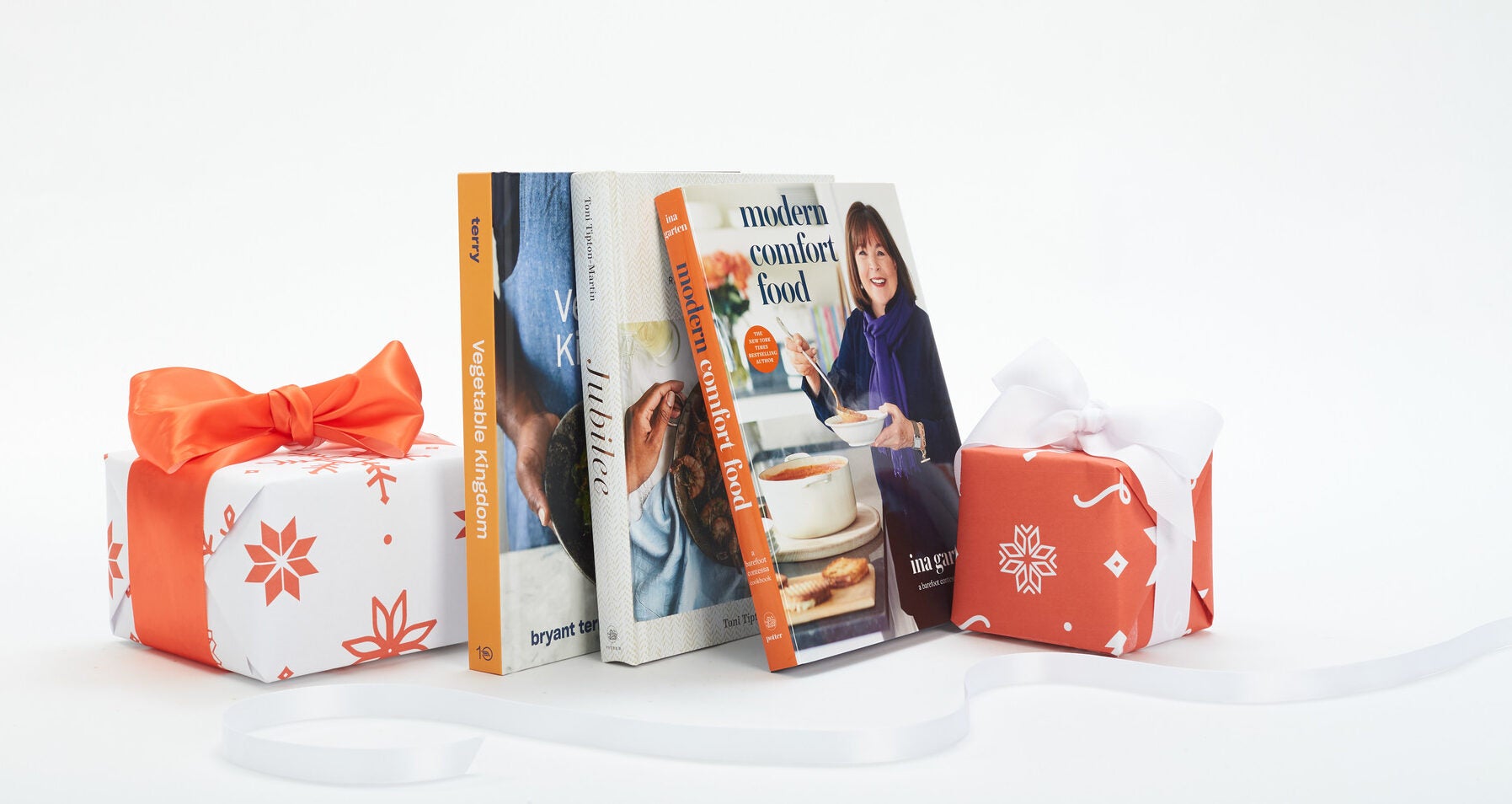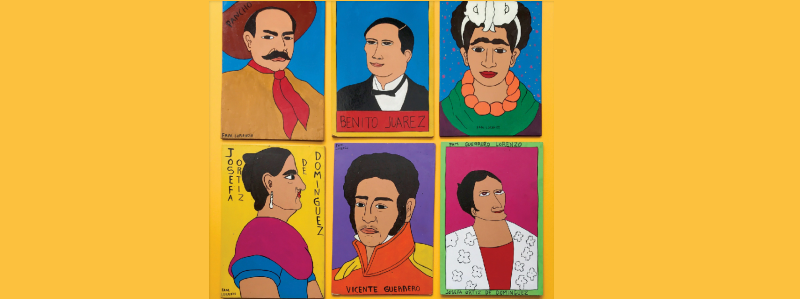Introduction
When I was growing up in Austin, Texas, my mom and I spent a lot of time watching cooking shows. I’d stretch out on the hideous gold plaid sofa in front of our rear-projection big-screen TV (that took up half of the living room) and Mom would watch from the kitchen, usually while sweeping the floor with one of the superior Mexican brooms she’d buy across the border and bring home.
We loved
Two Fat Ladies on the BBC and
Emeril Live, but our favorite show was Diana Kennedy ’s. We’d watch her make chorizo with green and red chiles from a mercado in Michoacán, and were deeply envious of her sundrenched kitchen full of red clay bowls. It all just seemed so magical. And dammit, I wanted all of those things, too! I decided then and there that I would grow up to be just like her.
Now I know that this desire was masking a deeper one: the desire to understand myself. Sure, part of me wanted the ego recognition of being “the best” or “the authority,” but what was so devastating to me as a Mexican American boy growing up in Texas was that she knew more about my culture and my people than I did. That a British woman and Rick Bayless, a white man from Oklahoma, got to represent the culinary diversity of México while my Mexican American family tried to enculturate with meatloaf and Chef Boyardee.
My gread-grandfather Andrés Castruita was a dairy farmer in Torreón, a city in the northern state of Coahuila. He sold his farm in 1910, moved his family, including my five-yearold grandfather Agustín Flores Castruita, across the border and bought a small farm just south of Austin. Even though my grandfather only spent the first five years of his life in México, somehow, he was able to hold on to it—from the intense sea-green color of his house to his embellished style of handwriting to the mariachi songs he’d sing when he drank. I didn’t know at the time how Mexican all these things were, but in the years since, as I’ve explored the country myself, I’ve recognized them all. To this day, I’m not sure how he picked them up from such a young age.
Agustín would grow up in Austin, eventually marry and have five children, the first of whom was my mom, Gloria. While he wasn’t the best father in the world (he had a tendency to play favorites), he was a good grandfather. He liked me, probably because I looked like him. I have a lot of the Castruita features, but more important, I am dark, like he was. My mom, dad, and brother are all light-complected. When I was born, the nurse who delivered me said to my mom, “Gloria, your baby has a tan!”
From that moment on, I was different. I didn’t want to be, but I had no choice. I was brown, and in Texas in the 1970s that meant you were labeled Mexican. Neither of those things—being brown and being Mexican—was bad to me, but to many of the parents, students, and teachers at the all-white preschool and elementary school in a small town south of Austin (where I was the first Mexican American to attend and my younger brother was the second), they were bad. So my parents decided not to teach us Spanish as kids because they were worried we’d develop accents and would be made fun of or be held back in school as a result.
When I was in first grade, the school administration tried to put me in the free-lunch program. Both my parents worked; we were middle class; we had a swimming pool and lake property. But the assumption was that I needed it. When I was in second grade, the PTA tried to start a coat collection for me. I had two coats; they were new and both fit well. I didn’t need more coats. But the assumption was that I needed it. When I was in third grade, my homeroom teacher asked the class what we wanted to be when we grew up. I eagerly raised my hand and said I wanted to be President of the United States. The little boy who sat next to me looked me in the eye. “You can’t be President,” he said. “You’re not white.” I was so confused. I didn’t understand. I went home that night and asked my parents and they said he was wrong; as an American-born citizen, I had every right to be president. But that eight-yearold boy was taught that I couldn’t be. Someone he trusted said those words to him. And his assumption was that I needed to hear them.
Back when my parents bought their first home in Austin in 1963, the neighborhood association called a vote on whether to allow them, a Mexican American couple, into the community or not. Eleven years later, they were forced to finance their second home on their own because no mortgage company would lend money to a Mexican American family wanting to build a custom-home in an all-white suburb. Texas was a brutal place for people of color.
As I grew older, my mom started to explore her own identity. We took weekend trips across the border to an unassuming little town called Nuevo Progresso, about five hours from Austin. My mom loved it, and I would later fall for Nuevo Progresso as well. It only had one paved street, but it was there that I got to experience for myself the vibrant mercados I’d only ever seen on Diana Kennedy’s and Rick Bayless’s shows. Whole animals from farms five miles away would arrive in the morning, get butchered onsite, and be sold fresh to people who would go home and cook the meat that afternoon. At the comida corrida stalls, the mercado version of fast food, there was such an immediacy to the connections people had to one another, from farmers and ranchers to cooks and eaters.
My mom was taken by the spices and dried chiles she found there. At a time when everyone, even Mexican Americans, were using chili powder (used to flavor the dish of the same name), canned sauces, and jarred moles, she experimented with chiles anchos, pasillas, and guajillos. My aunts saw it as the equivalent of churning your own butter; if you had access to McCormick’s, why would you take the time to buy a whole dried chile, reconstitute it, and puree it? But as you’ll see in the recipes that follow, this process is at the very heart of Mexican cuisine, and the flavor is clearly superior. (Try my Birria estilo Aguascalientes on p. 216 and I think you’ll agree.)
We never talked about it, but I think that during this time my mom was longing for a connection to México and to her heritage. Immigrants and first- and second-generation Mexican Americans often live in two different worlds. One world is wholly white American, where you feel compelled to fit in to the point of sacrificing your own identity. The other is Mexican, which for immigrants is the world you left behind and always miss, but for firstand second-generation Mexican Americans it is the world you don’t fully understand because you are so far removed from it. My mother was first generation, and her food reflected that.
She learned a lot of what she knew from her mother (who was known for her epic Thanksgiving feasts and the oyster cornbread dressing she’d serve) as well as from the home ec classes that she had to take in high school where she learned classic mid-century American dishes like cheeseballs, fondue, and chicken and dumplings. When she got married she bought the 1963 edition of the
Betty Crocker Cookbook (which I still have to this day) with lobster thermidor and the gelatin molds and the sugar cookies (only Mary’s, never Ethel’s) as well as the complete set of the Time-Life Foods of the World cookbooks. She was passionate about food and loved to cook.
When she was in the kitchen, she never tasted her food, which drove me crazy when I got to culinary school, where one of the core tenets is to taste as you go. But she had the keenest sense of smell of anyone I have ever known; all she had to do was sniff and she’d know exactly what a dish needed and could balance it perfectly. She’d call in me or my brother or my father at the end and have us taste, only for salt. “Why don’t you try it?” I would ask, and she’d give me that disgusted-but-not-disgusted mom face. “Why would I need to?”
Above all, my mom cooked to express her love. The biggest insult you could ever give her was to not like her food. In the thirty-nine years that I knew her, there were probably only two times I didn’t like what she made. (Sorry, but nobody needs salmon croquettes made with canned salmon.)
My mom is the reason that I cook. When I was four years old, I would push a chair to the kitchen, climb up, and stir the pots simmering on the stove. I’d watch her and learn. When I was in sixth grade, she took two weeks off of work during my winter break so we could learn how to make tamales together. She had only ever seen her aunts and her mother make them, all of whom had died by that point. There was no one in our family who could pass the recipe down, so she decided to restart the tradition and pass it to her sons.
Copyright © 2022 by Rick Martínez. All rights reserved. No part of this excerpt may be reproduced or reprinted without permission in writing from the publisher.












